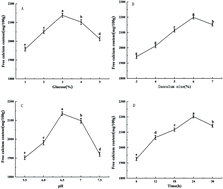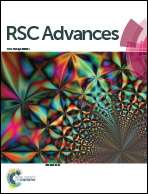Preparation of sheep bone collagen peptide–calcium chelate using enzymolysis-fermentation methodology and its structural characterization and stability analysis
Abstract
In this study, enzymatic hydrolysis and Lactobacillus fermentation were used in combination to prepare collagen peptide with high free calcium content, followed by the addition of anhydrous ethanol to obtain peptide–calcium chelate. The optimal conditions for the fermentation of enzymatic hydrolysate (glucose 3%, inoculum size 6%, 24.5 h, 37 °C and pH 6.5) were determined by response surface methodology (RSM), under which a free calcium content of 2212.58 mg/100 g was obtained. The calcium–chelating capacity was 42.57 ± 0.09%. The results of ultraviolet absorption spectrum, Fourier transform infrared (FT-IR) spectra, differential scanning calorimeter (DSC), X-ray diffraction and amino acid analysis indicated that calcium could be chelated through carboxyl oxygen and amino nitrogen atoms of collagen peptides, forming peptide–calcium chelate. The chelate is stable at 30–80 °C of temperatures and during in simulated gastrointestinal digestion, which could promote calcium absorption in human. The test intended to provide a basis for developing a novel calcium supplement and promoting utilization of sheep bone.



 Please wait while we load your content...
Please wait while we load your content...